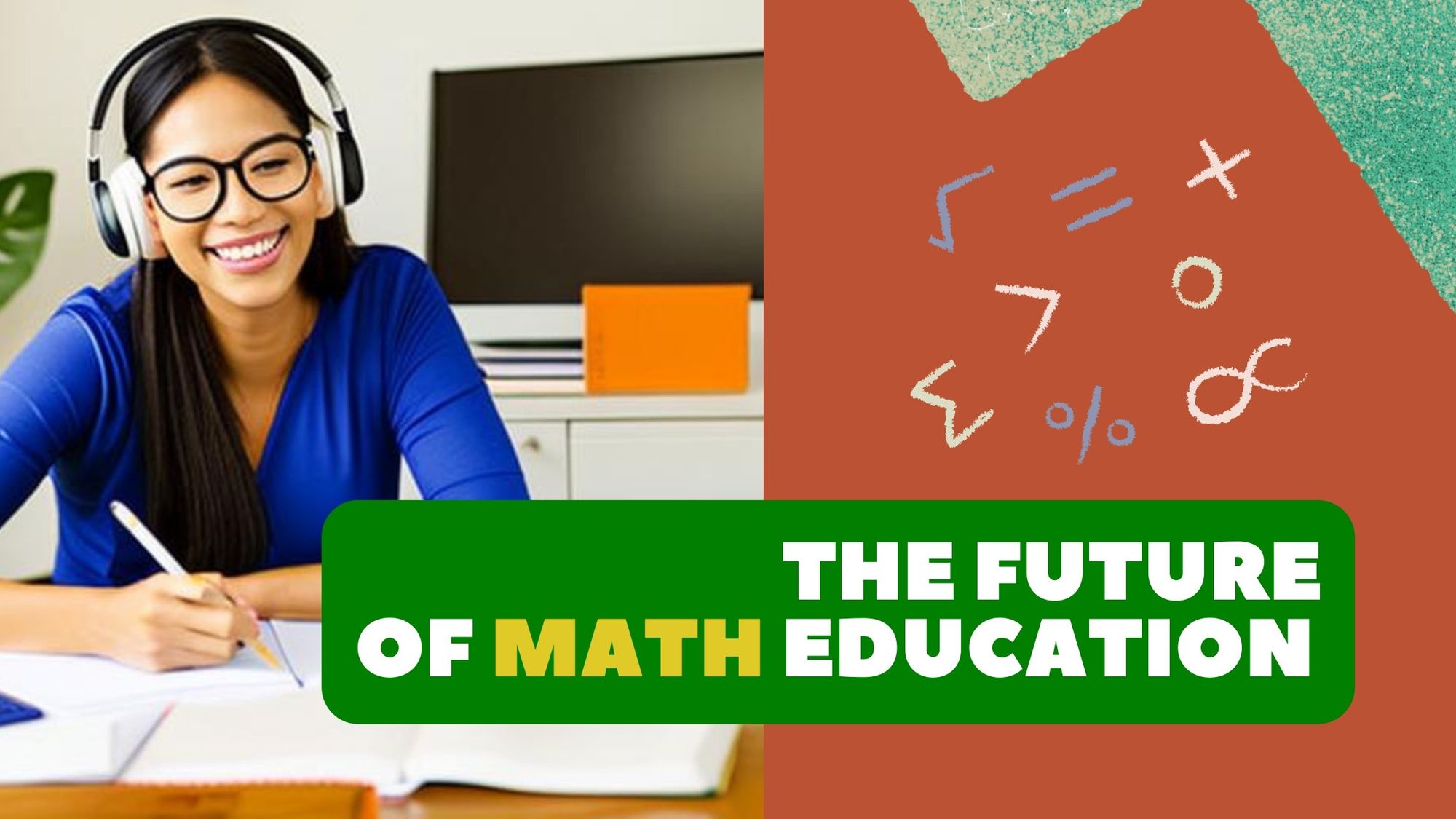New results released by the National Assessment of Educational Progress, also known as "America's Report Card," have revealed a disheartening statistic: in 2022, only 26% of eighth graders across the US demonstrated proficiency in essential mathematics concepts.
Eighth grade is arguably the most important year of a student's mathematics education, as it provides children with the fundamental building blocks for success in STEM-related fields. By mastering these concepts now, students are setting themselves up for future professional achievement.
Math teaching has come a long way in the last few years. With the advent of digital technologies, fundamental math topics are now taught in a very different manner than they used to be. Rather than relying solely on paper and pencil methods, today's classrooms incorporate technology-based activities that allow students to explore deeper levels of understanding.
How has digital technology shaken up classic course concepts?
Quadratic Equations are now universally taught to middle school students using more modern methods. Traditionally, solving such equations was done via manual manipulation techniques like completing the square or factorization; yet today, interactive tools that include graphing calculators, virtual manipulatives and math software apps help provide a visual understanding of solutions much faster without having to repeat complex steps.
Learning to graph linear equations has come a long way over the years. In the past, students had to plot graphs using paper and rulers or compasses - not exactly accurate nor ideal for effective learning. But today, graphing tools are available digitally that allow learners to draw functions more quickly and precisely than ever before. Moreover, graphing calculators have become incredibly useful in solving these equations with ease!
Over the years, methods for teaching students to solve systems of equations have changed drastically. Traditional methods such as elimination and substitution have been replaced with technology-driven strategies, allowing for more visual and interactive approaches. Graphical methods are becoming increasingly popular in digital classrooms, with computers and software programs used to graphically represent the variables and coefficients involved in these equations. This provides students with a tangible understanding of how the equations interact and fit together, rather than merely understanding how to manipulate numbers on paper.
Quite recently, popular approaches for instructing students to understand and apply trigonometry principles have progressed drastically. Traditional methods such as mnemonic devices (remember 'SOH-CAH-TOA'?) have been replaced with a more interactive approach that encourages exploration and experimentation. Utilizing digital visual media such as graphs, charts, and diagrams are extremely helpful in aiding students’ understanding of trigonometric identities and relationships.
Learning Math Online
Undoubtedly, the sudden migration to virtual learning due to the pandemic amplified this figure. However, it should still be a cause for alarm as U.S students achieved their lowest scores since early 2000s - a time frame that we surely are not proud of.
The United States has long suffered from a math skills gap in comparison to other developing countries, and Covid-19 only intensified the issue. In reality, this crisis was not generated by the pandemic itself; it had been present for years before its arrival.
With this challenge at hand, let's not immediately abandon e-learning development - after all, it offers a flexible and independent learning experience. Instead of choosing fewer options in the online educational space, we should be looking towards more opportunities to further our education goals!
Moreover, abandoning online education would also mean abandoning the thousands of students residing in remote and sparsely populated areas whose only access to quality educational resources is through broadband connections.
Instead of continuing with the status quo, America needs to take a step back and reconsider how we teach mathematics online. It is time for us to revolutionize math education by revisiting the idea of what constitutes a math class.
As a mathematics instructor, you have access to an array of techniques and tools that can be used to increase student engagement and learning outcomes when teaching math online.
Try Markup Hero
Ready to make amazing blogging graphics like the ones in this article?
Start using Markup Hero to take screenshots, annotate images and PDF's and become a blogging rockstar.
Signup For FreeCultivate Inquisitiveness, Not Perfection
Unlike disciplines such as Geography and History which are heavily reliant on rote learning, math education does not rely solely on a one-size-fits-all approach. Rather than simply delivering course content, it's the way in which students engage with that content which really bolsters their mathematical skill set.
Teachers should be aiming to stimulate inquiry and nurture exploration, as when it comes to mathematics what matters is not the ability of students to perform computations but instead how efficiently they can interpret data. Ultimately, you are instructing individuals who use computers rather than machines themselves.
As a teacher, you have the power to inspire your students to surpass course material. Introduce topics and provide access to online databases such as Khan Academy and MathsOnline that allow learners to expand their knowledge independently. By encouraging this self-guided exploration of educational resources, you can help them become more confident in their understanding of subject matters.
With a foundation of prior knowledge, teachers can then turn their attention to invigorating stimulating discussions in the classroom - sparking interest and curiosity.
One of the most effective methods for teaching is to have students teach each other. This can be done by having them record instructional videos or give live presentations to their peers.
Similarly, students can create test papers and assess each other based on their understanding, with supervisory input from the instructor. For those of you who have difficulty finding stuff online here are 10 Technology Tools For Teachers to Encourage Classroom Collaboration.
In short, every piece of information you can deliver during your class is already available online. So, why waste the time you have with your students re-inventing the wheel.
Additionally, once students discover the benefits of self-learning, they don't just limit themselves to courseware content. Rather, they strive further and advance in their learning journey. Thus it is important to provide close guidance and support for your pupils on this path of growth.
Always Put Knowledge into Practice
Have you ever heard a high schooler comment, “Trigonometry is only necessary for my math exam”? Unfortunately this thought process has become worryingly widespread among young people. This suggests that American public schools are fostering an attitude of low value towards mathematics skills - and it's not acceptable!
It's easy to place the onus of responsibility with students, but I believe this situation is due to something else. Most instructors neglect to make connections between math concepts discussed in class and their practical applications outside of school - making it understandable why many learners are unenthusiastic about learning topics they deem irrelevant for them.
To tackle this issue, instructors must take innovative approaches to math instruction. Rather than simply reciting concepts and formulas during tests, teachers should ask their students to demonstrate the practical application of these principles through real world examples. By doing so, both educators and pupils can gain a better comprehension of mathematics as it applies to everyday situations.
Rather than request that students declare the formula for calculating the area of a circle, consider asking them if one 10-inch pizza is larger than two 5-inch ones. Platforms like Illustrative Mathematics provide an abundance of content to help learners engage with mathematics issues in practical ways.

Unlock The Power of Game-Based Learning
Is your class’ attention slipping away, distracted by entertainment instead of learning? You can tell them to stop playing games, but convincing students otherwise is a difficult endeavor. It's no secret that education and gaming rarely go hand-in-hand; usually it's the latter that takes precedence in any situation they come across.
So, as the famed maxim goes, “If you can’t beat them join them,” the solution is simple: the gamification of education!
Games arouse passion, a sense of competition, and adventure among students. Using games to deliver educational ideas, formulae, and concepts goes a long way in helping students stay awake during your class. And there is no shortage of such games to choose from.
Tools like Buncee, Markup Hero, and Flipgrid help teachers break down complex concepts into storyboards making an otherwise dull activity exciting.
Similarly, games such as Math Twister, Multiplication Touch and Math Tic Tac Toe use familiar gaming elements to encourage students to learn with heightened concentration.
Lastly, games such as Monster Math prompt students to solve mathematical problems in the midst of their mission to save princesses and hunt monsters.
No longer do you have to expend time and energy crafting witty puns for your students; these games will take the lead in keeping them entertained during class.
The Final Verdict
As the United States battles a Math crisis, it's essential for educators to go beyond expectations to ensure that our little ones do not fall behind in Science, Technology, Engineering and Mathematics. Fortunately, there are countless online resources spanning from learning materials to games offering an alluring way of engaging students' interest as well as developing their math aptitude. All instructors need is up-to-date knowledge about these tools!


